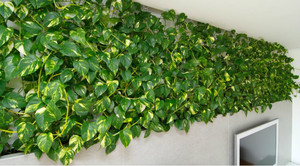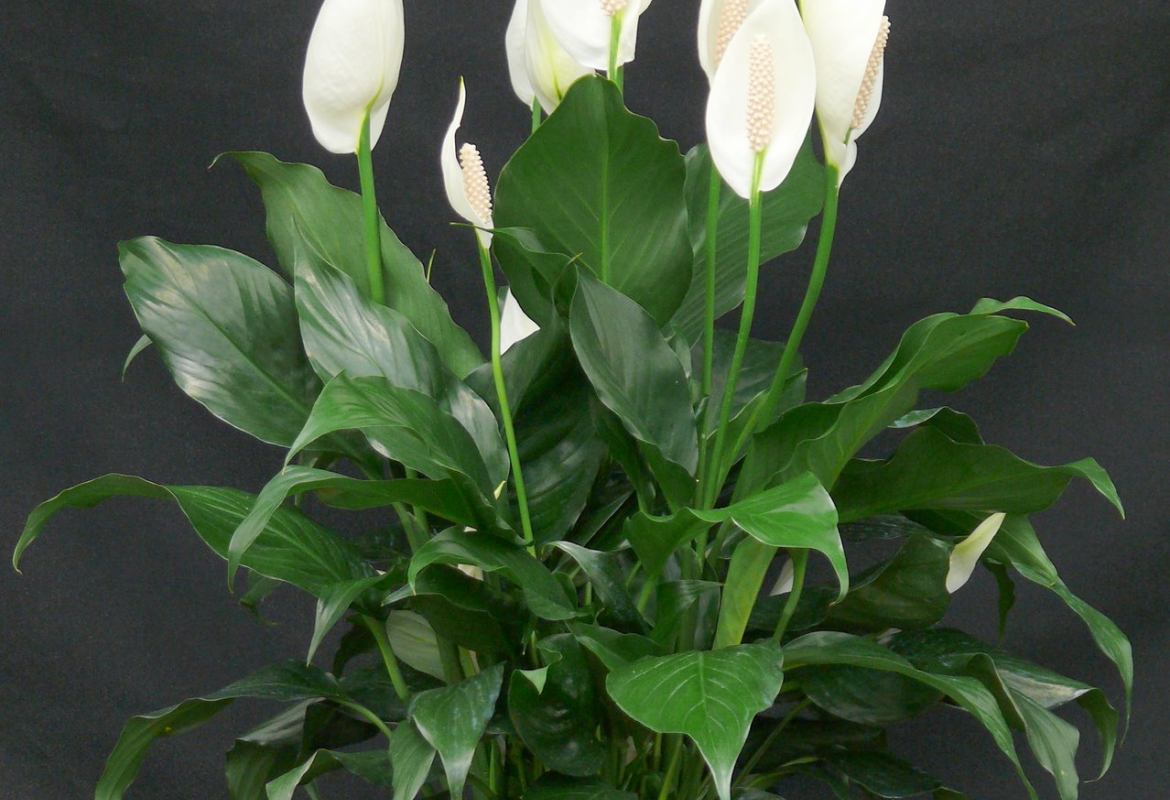Dipladenia belongs to the Kutrov family, which have juicy green leaves and large bright buds. In the subtropical climate, there are about 50 types of flowers. At home, you can grow a hybrid plant, which, with proper care, will delight you with beautiful flowering 1-2 times a year. The flower is suitable for beginners who know how to properly water, feed and transplant decorative plantings.
Content
What is interesting about the flower
In nature, the flower grows in the subtropics, so at home it is required to recreate conditions close to this. This can be done by maintaining high humidity and air temperature not lower than + 25 ° C in summer and + 15 ° C in winter.
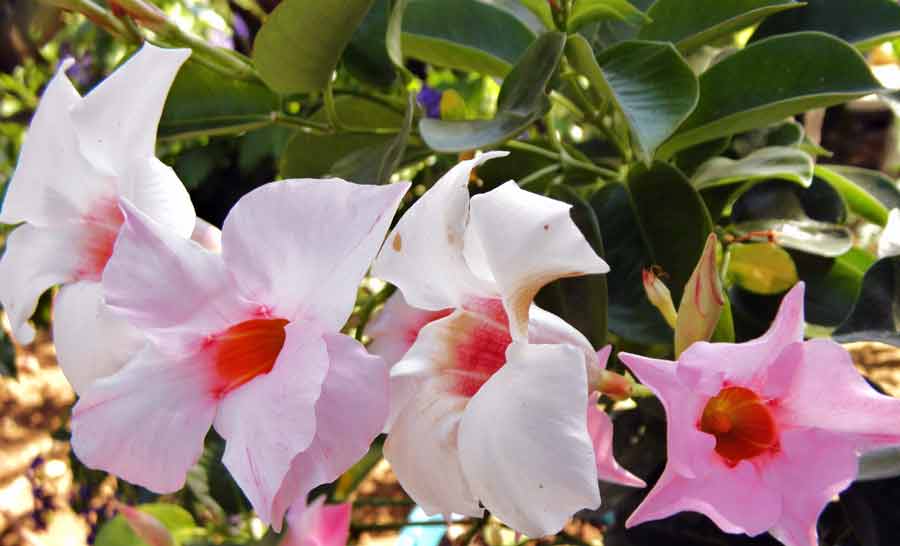
The plant was discovered in South America and was named Mandeville after a British florist. Later, botanists renamed it diplomatic, as it has paired honey glands. In nature, it is completely covered with large buds and blooms all year round.
The houseplant is known to many housewives under other names:
- Chilean jasmine;
- bolivian rose;
- Brazilian jasmine;
- Brazilian balsam;
- Mexican tree of love.
It is best to grow the flower in a garden plot as it grows quickly. Liana needs a support that she can entangle and climb along it.
Types and popular varieties with photos
Non-capricious Mandeville won the hearts of gardeners with its rapid growth and regular flowering. There are many types of plants that differ in color, size and shape of buds. The most common colors:
- white,
- pink,
- burgundy,
- scarlet.
Flowering occurs in early spring and lasts until November. Each flower lasts up to 10 days.
Mandeville brilliant
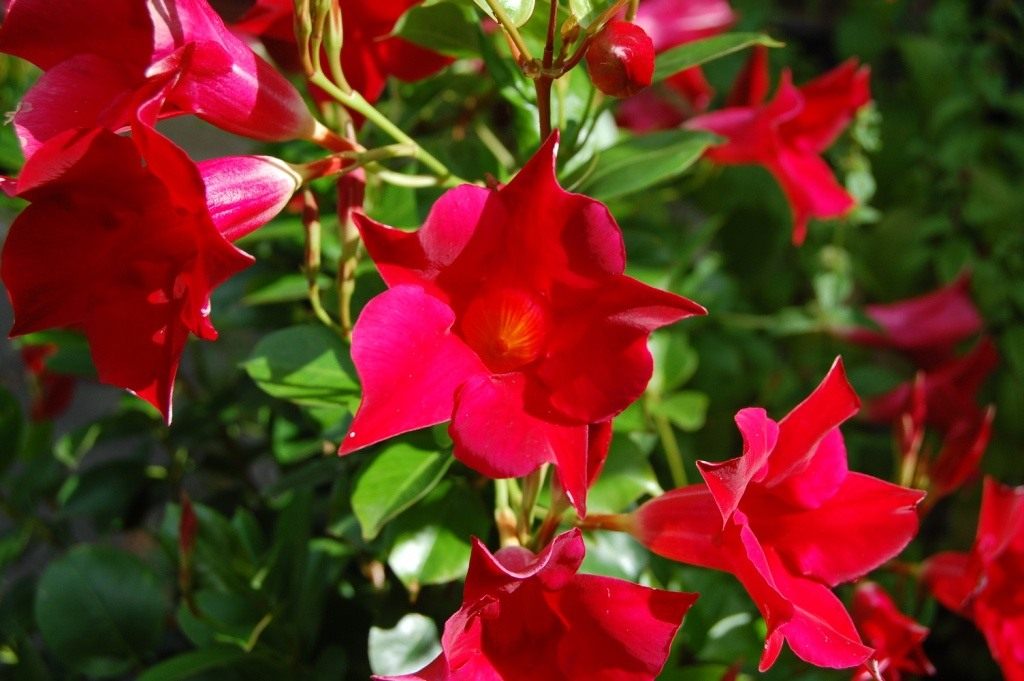
The plant is a large evergreen shrub with dark pink flowers. The diameter of the flower is about 10 cm.
Bolivian rose
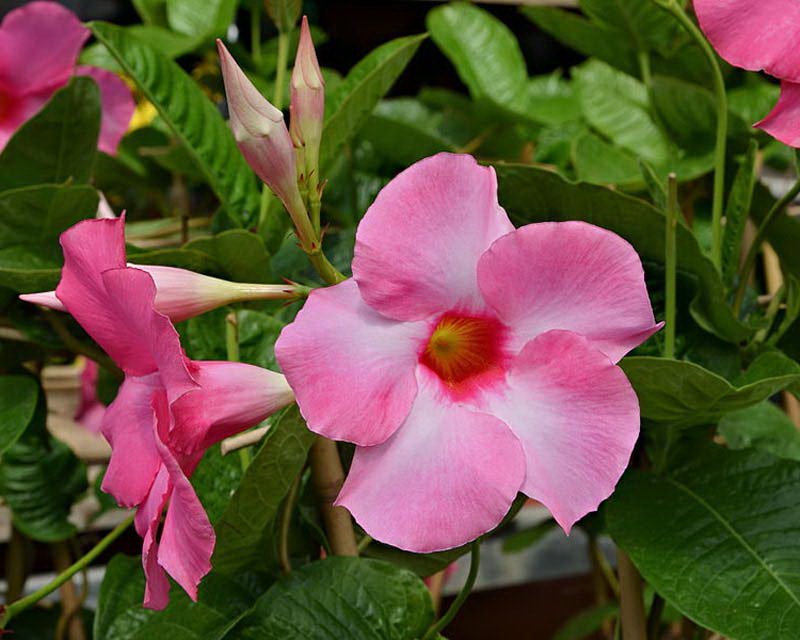
The most common type of plant that has beautiful flowers that can decorate any garden. Requires lower temperatures during cultivation.
Diplomatic property is excellent
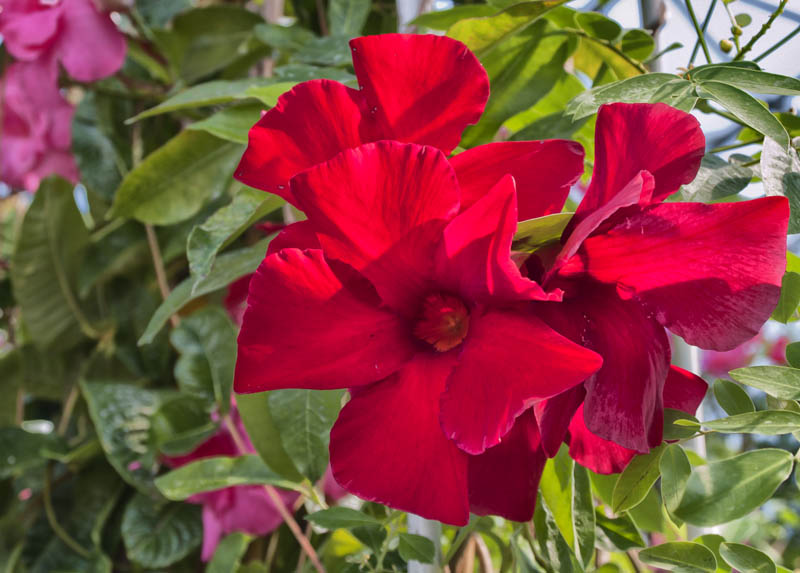
This liana-like plant has 8 red flowers up to 7 cm in diameter on each branch. Corollas have a pink-red hue, leaves are smooth, green.
Mandeville loose

Under good growing conditions it can grow up to 5 m. During the flowering period, white flowers appear up to 9 cm in diameter, collected in inflorescences of 5 pieces.
Care features
The flower's natural habitat is wet forest lawns, where it hides from the sun's rays and gusty winds. Proper care of the plant will allow you to enjoy its flowering for a long time. Due to the short daylight hours in Russia, diplodesia does not bloom all year round.
Containment Procedures: Table 1
The right conditions will help the flower grow and develop as it does in its natural habitat.
| Condition | Features: | |
| Location and lighting | The east side is a great place for a flower, as there is enough warmth and light.In summer, you can put the pot outside under a tree. In winter, additional lighting is required to make the daylight hours at least 14 hours | |
| Temperature regime | The saturation of the color of the buds directly depends on the temperature. Optimum temperature + 20 ... 25 ° C. In winter, the temperature must be at least + 15 ° C | |
| Watering and moisture | You can water the flower only when the soil is completely dried with water at room temperature. During the growing season, humidity increases slightly. In summer, the plant is irrigated 2 times a day, in winter only after complete drying of the soil | |
| Top dressing | Before the dormant period, it is important to give the plant a nitrogen supplement purchased from a specialized store. With abundant growth of greenery, a phosphorus-potassium solution is added | |
| Support | The support is selected depending on the age of the flower, the length of the shoots, the development of the roots and the volume of the pot |
Compliance with all conditions will preserve the health of the plant for many years.
Landing rules: step by step instructions
Since the plant is found in nature in the tropics, acidic soil is suitable for it. Peat gives an acidic environment and must be added to the soil.
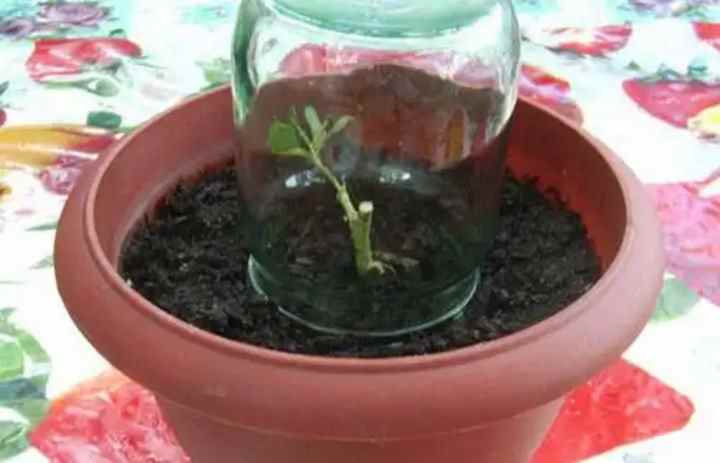
Step-by-step instruction:
- Preparation of the earth mixture: it should contain a lot of coarse sand or brick chips (particle size 3-5 mm). Peat is added to the soil.
- Kneading the soil. Ideal proportions: equal parts greenhouse soil, compost, peat, sand.
- Steaming: the prepared soil is steamed well in order to destroy parasites (the ground is poured with boiling water and left to dry completely or doused with steam using a steam generator).
- Rooting: young cuttings are placed in water until the roots appear 5-7 cm.
- Planting: the cuttings are transferred to a pot with prepared soil.
To protect the sprout and create a greenhouse effect for it, you should cover it with a glass jar.
Bloom
Abundant flowering occurs from spring to late November. An adult plant can simultaneously produce 75–80 buds. They persist for 50 days.
For the color of flowers to be juicy, they need sunlight, but the air temperature should not be more than +25 ° C. When propagated, new plants bloom by the end of the first year of life.
To ensure flowering throughout the year, it is important to increase the daylight hours to 16 hours a day using special artificial lighting, to increase the temperature and humidity.
Pruning
After the flowering period, it is necessary to prune diplodenia. The procedure will help protect the plant in winter and give it a beautiful shape.
Pruning is carried out from mid-September to the end of October.
First, 2/3 of undeveloped shoots are removed, then the formed stems are shortened by 1/3. In spring, buds will appear on young shoots. This fact is taken into account when forming the crown. It is formed by winding the cut parts onto the support.
It is important to carry out all work on pruning the plant with gloves, since the flower sap causes severe allergies.
How to provide a flower with rest
A good rest is the key to plant health and beautiful flowering.
Preparing for the rest period:
- Start to reduce watering from the end of August.
- In the autumn, carry out rare watering.
- In winter, water the flower once every 3-4 days after the soil has completely dried out.
- Put the pot with the resting plant in a box to avoid hypothermia.
In winter, the air temperature in a room with a diploma should not be lower than + 12 ° C.
Main problems and their solutions: table 2
Since it is quite difficult to care for a plant, many novice gardeners make mistakes that affect the state of the flower.
| Problem | Cause | Decision |
| Yellowing of leaves | Infestation by pests, a large amount of direct sunlight or too high an air temperature (above + 36 ° C) | If the leaves turn yellow, change the watering schedule, increase the humidity, remove the plant from the sun |
| Lack of flowering | Insufficient light supply | Move the plant to the sunny side |
| Slow growth | Incorrectly selected substrate | Transplant the plant into new soil |
| Falling leaves | Excess moisture | Revise the watering schedule |
Diseases and pests: table 3
With improper care, diseases can develop and pests can start that will destroy the flower.
| Problem | Signs | Eliminating the problem |
| Spider mites | Red spots on all parts of the flower | Rubbing leaves with soapy water with the addition of soda |
| Powdery mildew | The appearance of "silver" on the leaves | Fungicide treatment with the addition of lemon juice |
| Whiteflies | White pests on the leaves in large numbers | Placing the plant in fresh air and rinsing the leaves with soapy water |
| Mealybug | Cobweb-like white coating | Garlic juice treatment, next day rinsing with warm water |
Disease prevention will help preserve the flower.
Basic preventive measures:
- regular inspection of the plant;
- timely transplantation into new soil;
- removal of dying parts;
- scalding new pots and earth with boiling water before transplanting;
- isolation of a sick plant from healthy ones in the presence of pests;
- maintaining the necessary conditions for the flower.
Acidifying the water will help keep the flower healthy and beautiful. After adding lemon juice to the water for irrigation, it should stand for 24 hours at room temperature, and then apply as regular water for irrigation.
Reproduction: step by step instructions
The plant can be propagated by cuttings from mid-spring to mid-summer. It is quite simple to prepare them - you need to cut off the shoots and root them in water or specialized soil.
Basic Rules:
- cut off the stalk with 2 leaves;
- put in a glass with a peat mixture;
- cover with plastic or put in a greenhouse;
- water as needed.
Rooting can be done in plain water. Transplanting into the ground is carried out in the presence of roots. For some varieties of flowers, mainly terry, this breeding method is not suitable. Seed and mustache propagation should be tried.
Seeds and tendrils
Reproduction by seeds is a long and costly phenomenon. They germinate from 2 to 4 months. For the formation of the seed pod, the flower must be kept at high temperatures and in special soil. Experienced gardeners do not prefer this type of breeding. After planting the seeds, they need special conditions.
Professional growers prefer reproduction with tendrils, which regularly grow at the top of the plant. The flower bends down to the ground and attaches itself to the tendril. After the roots appear, the daughter part is separated and planted in a new pot.
Dipladenia is a tropical plant that can be kept indoors. With proper care for the dipladenia at home, the flower will be healthy and will delight the owners with beautiful large flowers. It is allowed to plant in garden plots in a suitable climate. In cold regions, such conditions are not suitable for him.
